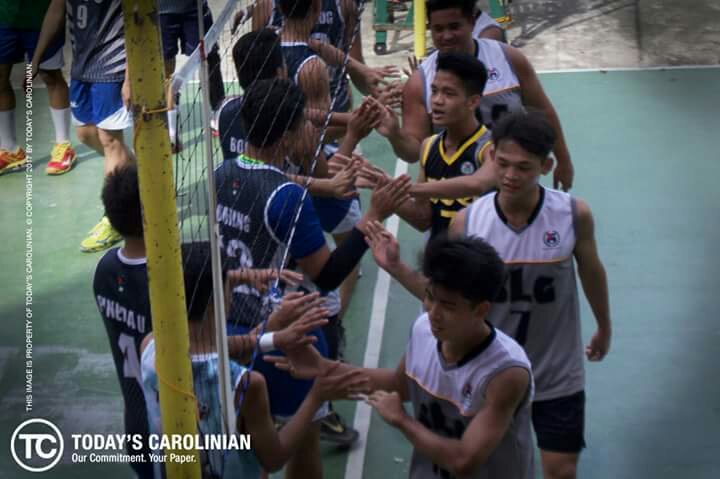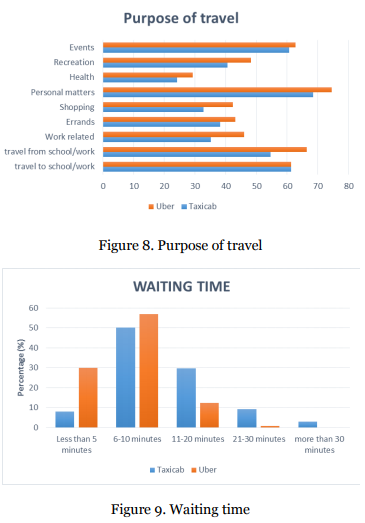Exodus in Education: Deconstruction, Reconstuction, Re-launching
The Carolinian community had a week off from academic activities as they celebrated University of San Carlos Intramurals 2017, uniting different schools all over the academe from August 22-26, 2017.
The 8 schools are the following: School of Arts and Sciences (SAS), School of Business and Economics (SBE), School of Education (SED), School of Engineering (SOE), School of Law and Governance (SLG), School of Architecture, Fine Arts and Design (SAFAD), School of Health Car and Profession (SHCP), and the newest in the family is the Senior High School (SHS).
The opening ceremonies filled the USC Downtown Gym with hundreds of students supporting their respective schools.
Fr. Dionisio Miranda, SVD, University President, officially opened the 2017 University Intramurals.
The highlights of the ceremonies were the parade of athletes from different schools, Mr. and Ms. Intramurals 2017 and cheer dance competition.
To show support for their support respective schools, students wore uniform colors: royal blue for SAS, green for SBE, fade blue for SED, yellow for SOE, gray for SLG, maroon for SAFAD, violet for SHCP, and apple green for SHS.
After the parade of athletes, the program then proceeded with Mr. and Ms. Intramurals 2017.
Each school had their own representative, proving that they both have the qualities of acquiring beauty and brains.
Out of 8 pairs, only 2 can have the runner up titles and 1 who can gain the title as this year’s Mr. and Ms. Intramurals 2017.

DJ Mae Dente awarded as Ms. Intramurals 2017
Photo source: Today’s Carolinian

Adrian Jose awarded as Mr. Intramurals 2017
Photo source: Today’s Carolinian
Next highlight was the Cheerdance Competition. There were six schools who participate in this year’s competition: SAS,SBE, SED, SOE, SAFAD, and SHS.
The champion was School of Arts and Sciences followed by School of Engineering and Senior High School as runner-up.

School of Arts and Sciences as USC Intramurals 2017 Cheerdance Competition Champion
Photo source: Today’s Carolinian
The opening ceremonies ended with student being satisfied with the performances they had witnessed.
Carolinian’s Other Side
Carolinians, as students, spend most of their time preparing themselves in achieving academic excellence.
Intramurals is the only time wherein Carolinians can showcase their other side through sports activities and at the same time have fun.
A lot of sports activities were prepared by the University’s program committee such as basketball, badminton, volleyball, futsal, table tennis, swimming, and more. Each sports were played by schools’ representative, separating men and women division.
Downtown and Talamban campuses hosted majority of the games because of its spacious area and sports facilities.
The University’s Supreme Student Council, Mr. Deodatus Paulo Burgos, said that this year’s intramurals went very systematic and organized well by the assigned committee.
“I am very happy to see how the Intramurals 2017 ended. It was well planned and organized. I can evaluate the success of our intramurals from the opening ceremonies, to the sports activities, down to the closing ceremonies. The whole student council were also glad of the outcome of our labor and love for the Carolinian service.” Burgos said.
Despite of the academic schedules each athletes have, they still managed to represent their school with pride.


Carolinians representing their schools in Badminton and Volleyball
Photo source: Today’s Carolinian
Closing Ceremonies
Every beginning has its ending. The USC Intramurals came to its closing ceremonies last August 26, 2017 at the USC Downton Gym.
Just like the opening ceremonies, the gym was filled with Carolinians who were there to witness the concluding part of the intramurals, announcement of winners, and Popjazz competition.
The screams and cheers of different schools showed how proud each students to their representatives receiving awards and recognition for all of their efforts throughout the whole intramurals week.
The Popjazz competition was one of the most awaited event of the yearly celebrated intramurals. The participants were SAS,SBE, SED, SOE, SHCP, SAFAD, and SHS.
The 2017 champion was SBE followed by SAFAD as first runner-up and SED as second runner-up.

School of Business and Education hailed champion for Popjazz Competition
Photo source: Today’s Carolinian
Post-reactions
USC Intramurals 2017 may have ended, but Carolinians are still expressing their observation and thoughts regarding this year’s event.
Social media posts reflected the feedback of the Carolinians.
Here are some of the reactions of Carolinians from different schools.
See: Carolinians react to USC intramurals 2017
Shane Kervy Uy, fourth year Civil Engineering student, expressed his happiness and at the same time disappointments from intramurals.
“This year’s intramurals gave me a mixed-emotion reaction because of the many things that had happened. I was happy because it was more systematic and more organized especially in the sitting arrangement inside the gymnasium. However, I was saddened because of the feud between the Senior High School and 7 other colleges.” Uy said.
The tension started when a twitter post went viral in social media.

The post gained a lot of negative actions and feedbacks from the different colleges.
Kayne Inso, fourth year Economics student, said that the jokes within the opening and closing ceremonies are already a tradition and saw nothing bad about it.
“The jokes between the different schools were normal and already a tradition. Also, it spices and adds the thrills during the intramurals. USC Intramurals is never USC Intramurals without such jokes.” Inso added.
The commotion that arose between SHS and other colleges is still in the process of healing, but the spirit of true Carolinian identity wins as the USC Intramurals 2017 concluded.



























